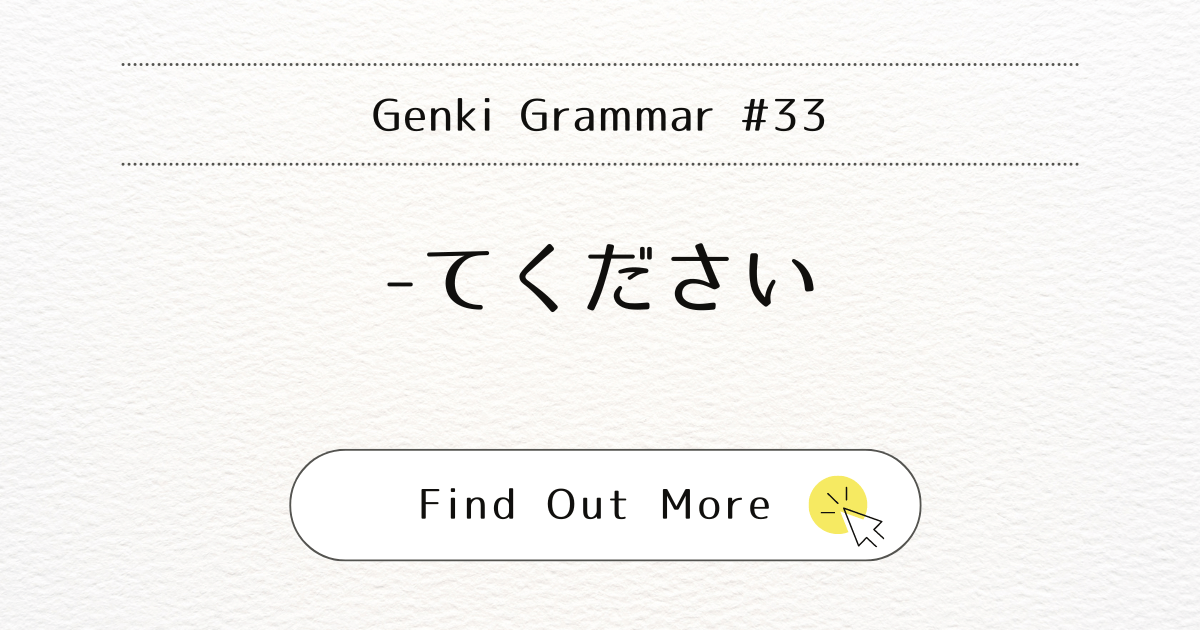
Introduction
In this lesson, we will learn how to use the -てください (-te kudasai) form to make polite requests in Japanese. This form is essential for asking others to do things in a polite and respectful manner.
What It Means
The -てください (-te kudasai) form is created by combining the te-form of a verb with ください (kudasai), which means “please.” This construction allows you to ask someone to do something for you in a polite way.
When You Use It
Use -てください (-te kudasai) when you want to make a polite request to someone. It is often used in formal or semi-formal situations.
Examples
- 教科書を読んでください。(Kyoukasho o yonde kudasai.) – Please read the textbook.
- すみません。ちょっと教えてください。(Sumimasen. Chotto oshiete kudasai.) – Excuse me. Please teach me a little. (This can also mean “Please tell me” or “I need your advice.”)
Note
If you are talking to a very close friend or a family member, you can use the te-form by itself as a request without ください (kudasai). For example: 窓を開けて。(Mado o akete.) – Open the window, will you?
ください (kudasai) means “please” or “give.” In the -てください (-te kudasai) structure, it means “please.” For example, 教科書を読んでください (Please read the textbook). In other contexts, like 水をください (Mizu o kudasai) – Give me water, it means “give.”
Conclusion
Using -てください (-te kudasai) is a polite and effective way to make requests in Japanese.



